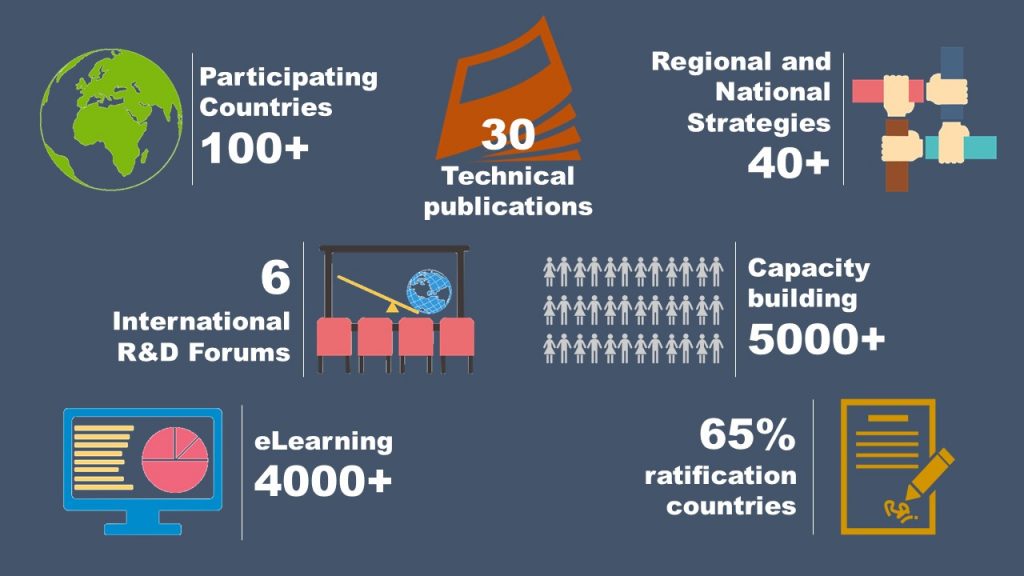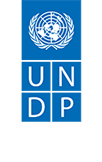The Project > The GloBallast Partnerships Project 2007-2017
Building Partnerships to Assist Developing Countries to Reduce the Transfer of Harmful Aquatic Organisms in Ships’ Ballast Water, simply referred to as GloBallast Partnerships (GBP), was initiated in late 2007 and is intended to build on the progress made in the original project. It is focussed on national policy, legal and institutional reforms in targeted developing countries with an emphasis on integrated management. This was initially planned as a five-year project, from October 2007 to October 2012. The Project Executive Committee has agreed to extend the Project until June 2017.
Project Management
The Project is being implemented by UNDP and executed by IMO, under the GEF International Waters portfolio.
A Project Coordination Unit (PCU) has been established within the Marine Environment Division (MED) at IMO headquarters in London. The PCU has the benefit of the support, facilities and services of IMO. High priority is being given to coordinating the activities of the programme with the broader activities of IMO, especially the adoption of the IMO Ballast Water Management Convention and the IMO Integrated Technical Cooperation Programme.
National Focal Points (NFPs) and National Project Coordinators (NPC) have been established in each of the Lead Partnering Countries, supported by inter-ministerial/cross-sectoral National Task Forces (NTFs). A list of NFPs and NPCs can be found in the Country Profile tab. Overall, the Project is advised by a Global Project Task Force (GPTF). This comprises representatives of GEF, UNDP, IMO, the participating countries, the shipping industry, international environmental NGOs and possible other parties that are able to contribute to the programme in a meaningful way.
A similar structure operates at the regional and national levels, with National Focal Points and other relevant parties participating in Regional Task Force (RTF) meetings, and similarly at National Task Force (NTF) meetings. Members of the NTF will report to the RTF, and in turn RTF members will report to the GPTF. With this mechanism in place, information is disseminated and activities coordinated between all parties, at all levels. This allows experiences to be shared and learned from globally, helping to achieve the Project’s main objectives.
Project Summary
Development objectives – Assist developing countries to reduce the risk of ballast water mediated bio invasions and; prepare the countries for implementation of the IMO Ballast Water Management Convention and compliance with its requirements at all levels.
Timeline – Ten years. Initially from October 2007 to October 2012. The Project was extended until June 2017.
Funding – Global Environmental Facility (GEF) Grant, with co-financing by IMO, GBP Participating Countries and Private Sector.
Implementation – United Nations Development Programme (UNDP).
Execution – International Maritime Organization (IMO), through Programme Coordination Unit (PCU).
Recipients/beneficiaries – 15 Lead Partner Countries, over 70 Partnering Countries with framework to be replicated throughout the regions.
Partners – Shipping and port industries, national administrations, international environmental non-governmental organizations, other parties as programme develops.
Project achievements

- Establish PCU at IMO, comprising Chief Technical Adviser, Technical Adviser, Project Management Assistant and support.
- Develop Info/Comms Network – including web-site, databases/directories, library collections, newsletter and an information clearing house.
- Identify Lead Agency, National Focal Point (NFP), National Project Coordinator (NPC) and establish National Project Task Force (NPTF) in each Lead Partner Country.
- Establish global coordination arrangements – Global Project Task Force.
- Form Regional Task Force (RTFs) to support development and adoption of a regional approach to ballast water management
- Develop and implement communication, education, awareness raising and outreach programmes.
- Develop knowledge management and GloBallast electronic information exchange systems including country profile database and information clearing-house mechanisms
- Develop introductory and more specialized training packages to train Lead Agency, port and shipping personnel in ballast water management measures as contained in IMO Convention and associated guidelines.
- Develop model legislations and compliance monitoring and enforcement models and related training modules to build capacity among the LPCs to address the issue
- Undertake rapid review of the baseline situation and an economic assessment in all LPCs to assist the development of a National Ballast Water Management Strategy (NBWMS)
- Review legislation relevant to ballast water in each country and advise/assist improvements.
- Implement national ballast water management strategy in each Lead Partnering Country including implementation of compliance monitoring and enforcement strategies.
- Develop regional capacity to undertake Port Baseline Surveys (PBS) of native biota and introduced marine species through regional PBS training programmes.
- Hold global R&D symposiums to review scope for new ballast water management and treatment measures and coordinate R&D agenda.
- Establish Global Industry Alliance for Marine Biosecurity (GIA) and GIA Fund to support activities aimed at technology development and technology diffusion among the industry.




